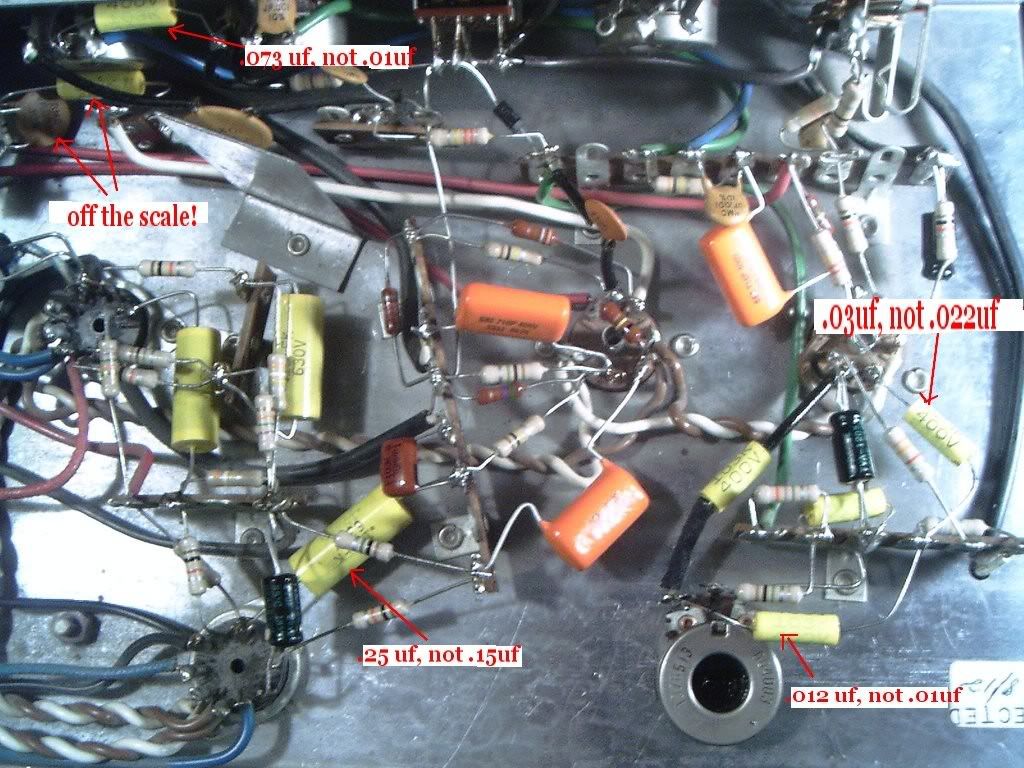Some additional comments on the amp I have.
Modifications that I found were the input jack circuit rearrangement, the addition of the cathode bias scheme on the power tubes, the addition of two parallel jacks in the rear, the tremolo circuit affecting the signal between the tone stack and V2 (as opposed to adjusting the bias). Several of the component values were also different.
One original pot on the bottom of the chassis is for the trem circuit, but I didn't know what to label it, so my schematic just shows it as ??? Trem for now. I'll update that once I learn what it does.
Also, on the power on light, my schematic shows an LED, but it's just a regular bulb. I didn't have a symbol for it, so just substituted in this case.
Modifications that I found were the input jack circuit rearrangement, the addition of the cathode bias scheme on the power tubes, the addition of two parallel jacks in the rear, the tremolo circuit affecting the signal between the tone stack and V2 (as opposed to adjusting the bias). Several of the component values were also different.
One original pot on the bottom of the chassis is for the trem circuit, but I didn't know what to label it, so my schematic just shows it as ??? Trem for now. I'll update that once I learn what it does.
Also, on the power on light, my schematic shows an LED, but it's just a regular bulb. I didn't have a symbol for it, so just substituted in this case.




